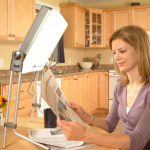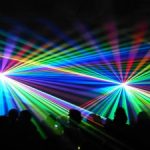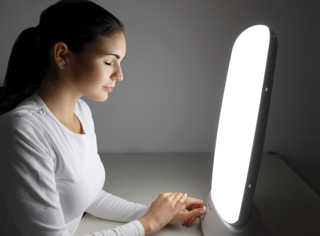What Is Autism Spectrum Disorder?
Autism spectrum disorder or ASD is a term used to describe a group of disorders. These disorders include Aspberger’s syndrome and pervasive developmental disorder, known as atypical autism. The most commonly occurring form of Autism spectrum disorder is autism. The symptoms that are brought about by ASD are seen early on in childhood which is why it is called a developmental disorder. The word spectrum is used to describe the disorder because the symptoms, severity, and intensity can greatly differ between children. On average, 1 in 160 children will be diagnosed with ASD. Boys outnumber girls 4 to 1. 75% of these children have low intelligence levels while around 10% show high levels of intelligence typically in mathematics and computer sciences. Some children have incredible abilities in fields such as music and memory.
What are the causes?
While there is vivid explanation for the cause of autism spectrum disorder, research is constantly being conducted. According to the Australian Psychological Society, “There is no clear explanation about what causes ASD. However, family studies have shown that genes play a role. For example, if one identical twin has autism then the other has around a 75 per cent chance of also having autism. In non-identical twins, there is a five to eight per cent chance that both twins will have autism. ASD also tends to occur more often than expected among people with certain medical conditions. Researchers are investigating the link between children whose mothers had problems during pregnancy or delivery, as well as the contribution of viral infections, dietary imbalances, and exposure to environmental chemicals.” (Psychology.org)
Light Therapy & Autism Spectrum…
Children with autism spectrum disorder do not have easy lives. Consider most people’s daily struggles and then add ASD to it. When the natural ways of the world weigh on their shoulders, life can get tough. Light therapy is known to treat conditions such as seasonal affective disorder, depression, insomnia, chronic pain, skin conditions, and more. When children struggling with these conditions are also battling ASD daily, they need a little help. This is where light therapy comes into play.
My Aspergers Child is a website dedicated to helping parents of children with aspergers and high functioning autism. The website is run by Mark Hutten, M.A., a counseling psychologist, home-based family therapist and online parent coach. Hutten claims that his website is education and counseling for individuals affected by ASD. Hutton wrote a blog about light therapy being used for children and teens on the autism spectrum. Hutton writes,
“Phototherapy (also called “light therapy”), which involves exposure to artificial light, is quickly becoming a popular way to treat seasonal affective disorder (SAD) in children on the autism spectrum. SAD is a type of depression that occurs at a certain time each year, usually in the fall or winter. During phototherapy, your child sits near a device called a light box. The box gives off bright light that mimics natural outdoor light.
Phototherapy is thought to affect brain chemicals linked to mood, easing SAD symptoms. Using a light box may also help with other types of depression, sleep disorders and other conditions. You may want to try phototherapy on your child for a number of reasons:
- If the child is on medication for depression, it may allow him or her to take a lower dose of antidepressant
- It’s a proven treatment for SAD
- If the child has another condition (e.g., OCD, anxiety, insomnia)
- If you want to try a treatment method that is safe and has few side effects
Generally, most children with SAD begin treatment with phototherapy in the early fall when it typically becomes cloudy in many regions of the country. Treatment usually continues until spring when outdoor light alone is sufficient to sustain a good mood and higher levels of energy.
If your child typically has fall and winter mood problems, behavioral issues or depression, you may notice symptoms during prolonged periods of cloudy or rainy weather during other seasons. You and your physician can adjust the light treatment based on the timing and duration of your child’s symptoms.
During phototherapy sessions, your child will sit near the light box. Many children use this time to complete homework. To be effective, light from the box must enter the eyes indirectly. Your child can’t get the same effect merely by exposing his or her skin to the light. While the eyes must be open, your child should not look directly at the light, because the bright light can damage the eyes. Be sure to follow your physician’s recommendations as well as the manufacturer’s directions.”
(MyAspergersChild.com)
How It Works…
Light therapy treatments are most effective when there is a perfect combination of three key elements. These elements are timing, light intensity, and duration.
Timing is most effective when done in the morning. It is recommended for children to begin their light therapy treatment session as soon as they wake up. Eating breakfast or reading in front of the light box is a good option to keep this a routine. When it comes to intensity, light boxes are measured in lux. Lux is a measure of the light received from the light box from a certain distance. Boxes usually range from between 2,500 lux and 10,000 lux. The distance the child can sit away from the light box depends on the level of lux as well as the session time required. For example, a light box that emits 10,000 lux will probably only require a 30 minute treatment session. A light box that emits 2,500 lux will probably require a session close to two hours. It’s important to consider a child’s energy and patience levels before purchasing a light box. The third key element is timing. It’s important to discuss this element with a doctor. During the beginning stages of treatment, a shorter time frame is typically recommended. For example, 10 minutes. As daily sessions continue, the time frame can lengthen.
Light therapy requires time, routine, and scheduling. It’s important to find a light therapy box that fits complacency into a child or teenager’s lifestyle. While phototherapy/light therapy doesn’t necessarily cure seasonal affective disorder, depression, insomnia, or any other similar conditions, it does ease symptoms, raise energy levels, boost confidence and increase happiness in children. But most importantly, it can improve the quality of life for a children struggling with ASD. Is it time for someone you love to try light therapy?








